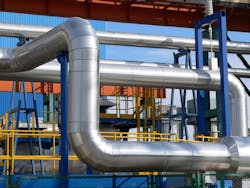Manufacturing Disinvestment in China?
Reinvestment during the next five years may bring manufacturing jobs out of China and back to the U.S., according to an analysis by management consulting firm The Boston Consulting Group (www.bcg.com).
“Within the next five years, the United States is expected to experience a manufacturing renaissance as the wage gap with China shrinks and certain U.S. states become some of the cheapest locations for manufacturing in the developed world,” according to a press release.
“Executives who are planning a new factory in China to make exports for sale in the U.S. should take a hard look at the total costs,” said Harold L. Sirkin, a BCG senior partner and author. “They’re increasingly likely to get a good wage deal and substantial incentives in the U.S., so the cost advantage of China might not be large enough to bother—and that’s before taking into account the added expense, time, and complexity of logistics. Sirkin’s book, “Globality: Competing with Everyone from Everywhere for Everything,” deals with globalization and emerging markets.
A number of companies, especially U.S.-based ones, are already rethinking their production locations and supply chains for goods destined to be sold in the U.S. For some, the economics have already reached a tipping point, according to BCG.
Heavy machine maker Caterpillar Inc. (Peoria, Ill.), for example, last year announced the expansion of its U.S. operations with the construction of a new 600,000-square-foot hydraulic excavator manufacturing facility in Victoria, Texas. Once fully operational, the plant is expected to employ more than 500 people and will triple the company's U.S.-based excavator capacity. “Victoria’s proximity to our supply base, access to ports and other transportation, as well as the positive business climate in Texas made this the ideal site for this project,” said Gary Stampanato, a Caterpillar vice president.
NCR Corp. (Chicago) announced in late 2009 that it was bringing back production of its automated teller machines to Columbus, Ga., in order to decrease the time to market, increase internal collaboration, and lower operating costs. And toy manufacturer Wham-O Inc. (Woodland Hills, Calif.) last year returned 50 percent of its Frisbee and Hula Hoop production from China and Mexico to the U.S., according to BCG.
“Workers and unions are more willing to accept concessions to bring jobs back to the U.S.,” noted Michael Zinser, a BCG partner who leads the firm’s manufacturing work in the Americas. “Support from state and local governments can tip the balance.”
Zinser noted that executives should not make the mistake of comparing the average labor costs for production workers in China and the U.S. when making investment decisions. The costs of Chinese workers are still much cheaper, on average, than comparable U.S. workers, and some managers may assume that China is a better location. But averages can be deceiving.
“If you’re just comparing average wages in China against those in the United States, you’re looking at the problem in the wrong way,” Zinser cautioned. “Average wages don’t reflect the real decisions that companies have to make. Averages are historical and based on the country as a whole, not on where you would go today.”
Added Doug Hohner, another BCG partner who focuses on manufacturing, “In the U.S., we have highly skilled workers in many of our lower-cost states. By contrast, in the lower-cost regions in China, it’s actually very hard to find the skilled workers you need to run an effective plant.”
Even as companies reduce their investment in China to make goods for sale in the U.S., it is clear that China will remain a large and important manufacturing location. First, investments to supply the huge domestic market in that nation will continue. Second, in the absence of trade barriers that prevent offshoring, Western Europe will continue to rely on China’s relatively lower labor rates.
Third, even though other low-cost countries—such as Vietnam, Thailand, and Indonesia—will benefit from companies seeking wage rates that are lower than China’s, only a portion of the demand for manufacturing will shift from China. Smaller low-cost countries simply lack the supply chain, infrastructure, and labor skills to absorb all of it, Hohner noted.
*****************************************************************
*****************************************************************
> For more CHINA and ASIA manufacturing news and content, click here.
*******************************************************************
*******************************************************************
“All over China, wages are climbing at 15 to 20 percent a year because of the supply-and-demand imbalance for skilled labor,” said Sirkin. “We expect net labor costs for manufacturing in China and the U.S. to converge by around 2015. As a result of the changing economics, you’re going to see a lot more products ‘Made in the USA’ in the next five years.”
Products that require less labor and are churned out in modest volumes, such as household appliances and construction equipment, are most likely to shift to U.S. production. Goods that are labor-intensive and produced in high volumes, such as textiles, apparel, and TVs, will likely continue to be made overseas.
The BCG analysis is part of an ongoing study of the future of global manufacturing that the firm's Global Advantage and Operations practices are conducting.
Renee Robbins Bassett, [email protected], is Managing Editor of Automation World magazine.
The Boston Consulting Group (www.bcg.com)

